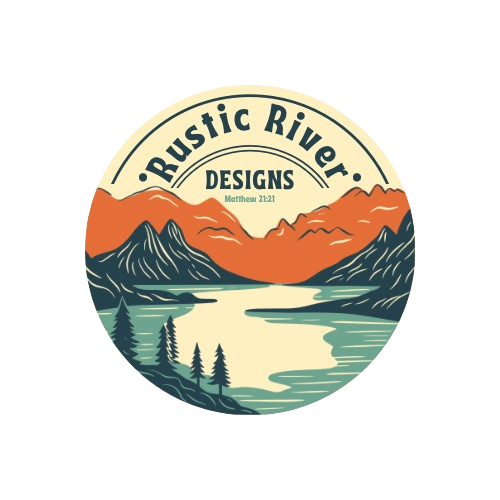Charlotte & Lake Norman Area DIY Guide
How to Avoid Common Epoxy River Table Mistakes
Creating an epoxy river table is one of the most rewarding woodworking projects
— but if you live in Charlotte, Huntersville, Davidson, Cornelius, or Hendersonville, NC, you know that humidity, weather swings, and DIY learning curves can turn your dream pour into a resin disaster.
Whether you're a professional furniture maker in Charlotte, a hobbyist in Huntersville, or just experimenting in your Davidson garage, here are the most common epoxy river table mistakes and how to avoid them — with tips that are especially useful for North Carolina's climate and conditions.
Mistake 1: Not Prepping Your Wood or Mold Properly
1a. Flatten Your Wood Slabs First
Before pouring your epoxy in Cornelius or Hendersonville, make sure your slabs are fully flattened. Uneven slabs allow epoxy to seep underneath, causing uneven fills and wasted resin.
Pro Tip for Charlotte woodworkers: Use a local CNC service or router sled to guarantee a level surface.
1b. Clean the Live Edge
If you're going for a clear or transparent river pour, any dust or debris on the live edge will be visible forever. In a humid place like Hendersonville, make sure everything is bone dry and dust-free.
1c. Seal the Wood Edges
North Carolina hardwoods (like walnut or maple) vary in density. Seal your slabs with an epoxy sealer to prevent them from drinking up your deep pour epoxy — saving you cash and curing headaches.
Just highlight the words you want to design and choose from the various options in the text editing bar. This is the text area for this paragraph.
Mistake 2: Incomplete or Weak Mold Prep
If you’re building your mold in Davidson or Cornelius, don’t underestimate how fast epoxy can leak — especially in garages and sheds where temperatures fluctuate.
2a. Use Mold Release or Tuck Tape
Whether you're using melamine or MDF, always apply Tuck Tape or mold release for a clean, non-stick release.
2b. Level and Seal Your Mold
Use a level on your workbench and caulk both inside and outside edges with black silicone. Let it cure for 24 hours before pouring — especially crucial during humid Charlotte summers.
2c. Protect Your Workspace
Put plastic sheeting or a tarp between your mold and the floor. Epoxy spills in a Huntersville workshop can ruin a garage floor (ask me how I know).
2d. Add a Barrier Layer
Using brown commercial-grade wax paper as a lining adds another leak-resistant layer — helpful if you're working in an uncontrolled climate like Lake Norman’s surrounding towns.
2e. Build Oversized
Leave extra space on all sides of your table. That way, you can trim and square the finished piece — perfect for clean final dimensions, whether you're selling in Charlotte markets or displaying at a craft fair in Hendersonville.
Preparing Your Mold for a Custom Epoxy Table: Avoid Common Pitfalls At Rustic River Designs
We know that creating a stunning epoxy table involves not only the right materials but also meticulous preparation. Whether you're dreaming of a live edge masterpiece or a sleek modern design, understanding how to prepare your mold is essential to ensure your table turns out perfectly. Here are some tips to help you avoid common mistakes and make the most of your custom piece.
At Rustic River Designs, we specialize in creating unique heirlooms and can assist with your epoxy needs. We’re currently taking custom orders, so let’s craft something special that can be cherished for generations!
Pouring epoxy for custom tables without a plan can cause major headaches. At Rustic River Designs, we believe that quality starts before the epoxy meets the wood.
Without a clear plan, you risk mismatched colors, uneven pours, or bubbles that disrupt the wood's beauty. No one wants a stunning live edge table ruined by easily avoidable mistakes!
Before you begin, envision your final piece. Think about the colors, flow, and how the epoxy will enhance the wood’s natural features. This step ensures your custom piece is as beautiful as you imagined.
Mistake 3: Pouring Epoxy Without Planning
When pouring epoxy for your custom tab in Davidson or Cornelius, be mindful of how quickly it can leak—especially in garages and sheds where temperatures fluctuate
3a. Measure Your Epoxy
Use an epoxy volume calculator. Base it on the average river width and depth to avoid running out mid-pour — especially important when supplies might not be nearby in Davidson or Cornelius.
3b. Use Enough Pigment
In places like Charlotte where natural light shows every flaw, using enough mica pigment ensures depth and swirl in your epoxy. Don’t skimp.
3c. Clean Everything First
Dust and pollen can be an issue in North Carolina shops — especially in spring. Wipe everything down before you mix and pour.
3d. Watch the Weather
If you're pouring outdoors or in an unheated garage, timing is everything. North Carolina weather can swing fast — you want a steady 60–80°F for an ideal cure.
3e. Choose the Right Epoxy
Use a high-quality deep-pour epoxy (like
Chill Epoxy) that suits the job. Not all products can handle thick layers or
Charlotte's summer humidity.


